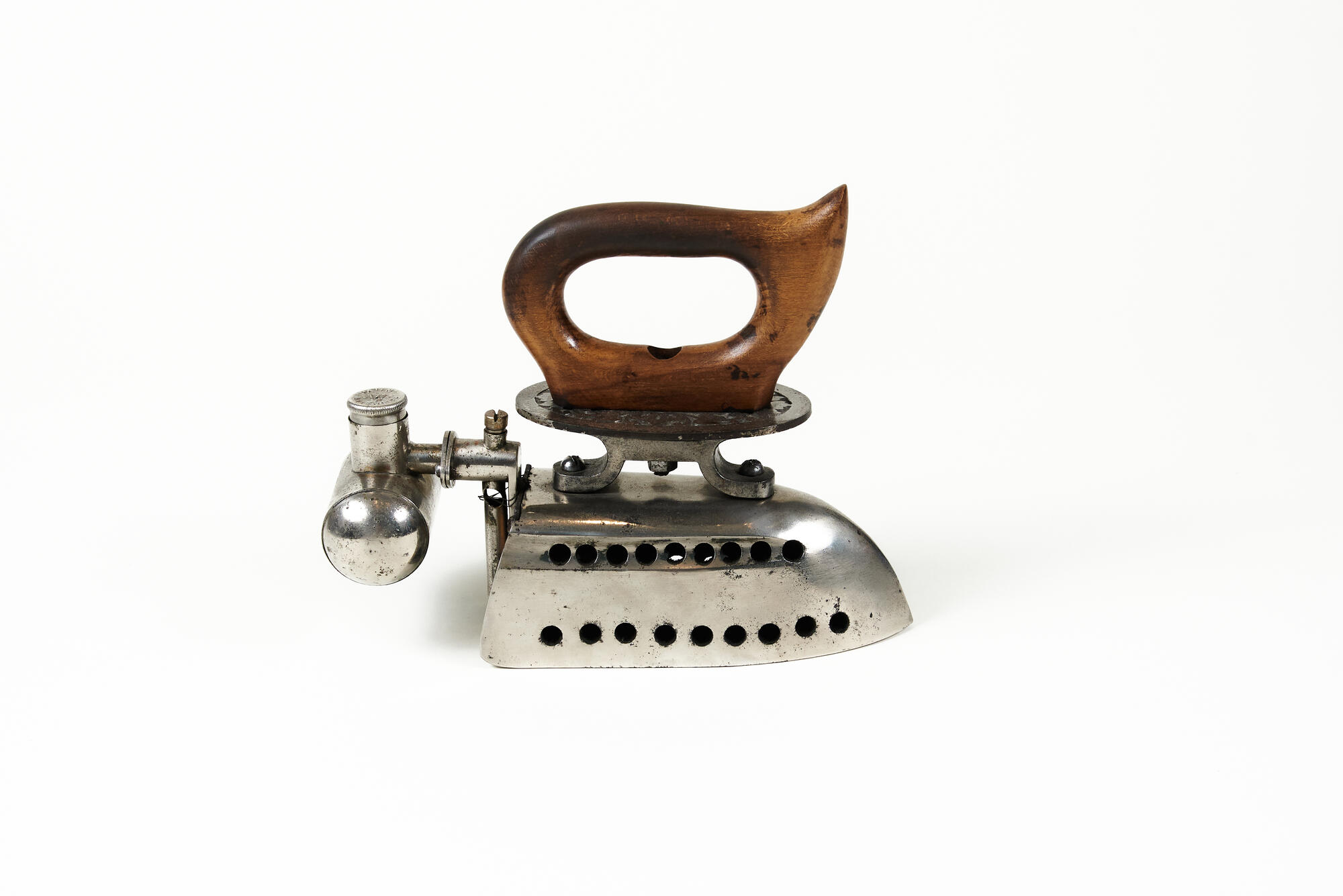The first electric iron was patented in 1882. Before that, inventors constantly tried to improve the existing irons and develop new devices. The spirit iron was one of the intermediate stages in this process. It was very popular in Europe and was considered to be safer compared to the gas iron. Its design was similar to that of a kerosene lamp: the iron’s surface was heated by the alcohol burning inside of it. Fast heating and low weight were the advantages of this iron in comparison with the cast-iron version. This iron could be used while travelling.
However, an iron of this type was very expensive with a cost of up to 10 rubles. One spirit iron could be exchanged for a small flock of sheep. Nevertheless, in the early 20th century, spirit irons were considered the most practical, convenient and safe type of irons. Unlike other models, they did not produce any smell, smoke, or soot. It was also important that, while having a simple design, they had an elegant look and served as a decorative element of the interior.
The device was ready for operation in ten minutes after lighting up the alcohol. The operating procedure was the following: at first, the user would remove the burner from the device, fill the burner with alcohol, and light it up. Once the burner was hot, it was inserted back into the iron. To extinguish the burner, the user had to take it out again and blow out the fire.
However, spirit irons were not very popular because both the device itself and the fuel were quite expensive. Ironing one shirt required a whole glass of medical alcohol which was only available at pharmacies. That is why the new device never became widespread in Russia. Over two thousand irons were imported to Russia from Europe, but not a single one of them was sold. First of all, the price of 10 rubles was too high for most people. To put that into perspective, the rent of a furnished room with central heating in Moscow was 5 rubles per month. Secondly, people assumed that it was impractical to use alcohol that way. It was easier for them to buy a cast-iron device for just one ruble.
However, an iron of this type was very expensive with a cost of up to 10 rubles. One spirit iron could be exchanged for a small flock of sheep. Nevertheless, in the early 20th century, spirit irons were considered the most practical, convenient and safe type of irons. Unlike other models, they did not produce any smell, smoke, or soot. It was also important that, while having a simple design, they had an elegant look and served as a decorative element of the interior.
The device was ready for operation in ten minutes after lighting up the alcohol. The operating procedure was the following: at first, the user would remove the burner from the device, fill the burner with alcohol, and light it up. Once the burner was hot, it was inserted back into the iron. To extinguish the burner, the user had to take it out again and blow out the fire.
However, spirit irons were not very popular because both the device itself and the fuel were quite expensive. Ironing one shirt required a whole glass of medical alcohol which was only available at pharmacies. That is why the new device never became widespread in Russia. Over two thousand irons were imported to Russia from Europe, but not a single one of them was sold. First of all, the price of 10 rubles was too high for most people. To put that into perspective, the rent of a furnished room with central heating in Moscow was 5 rubles per month. Secondly, people assumed that it was impractical to use alcohol that way. It was easier for them to buy a cast-iron device for just one ruble.



